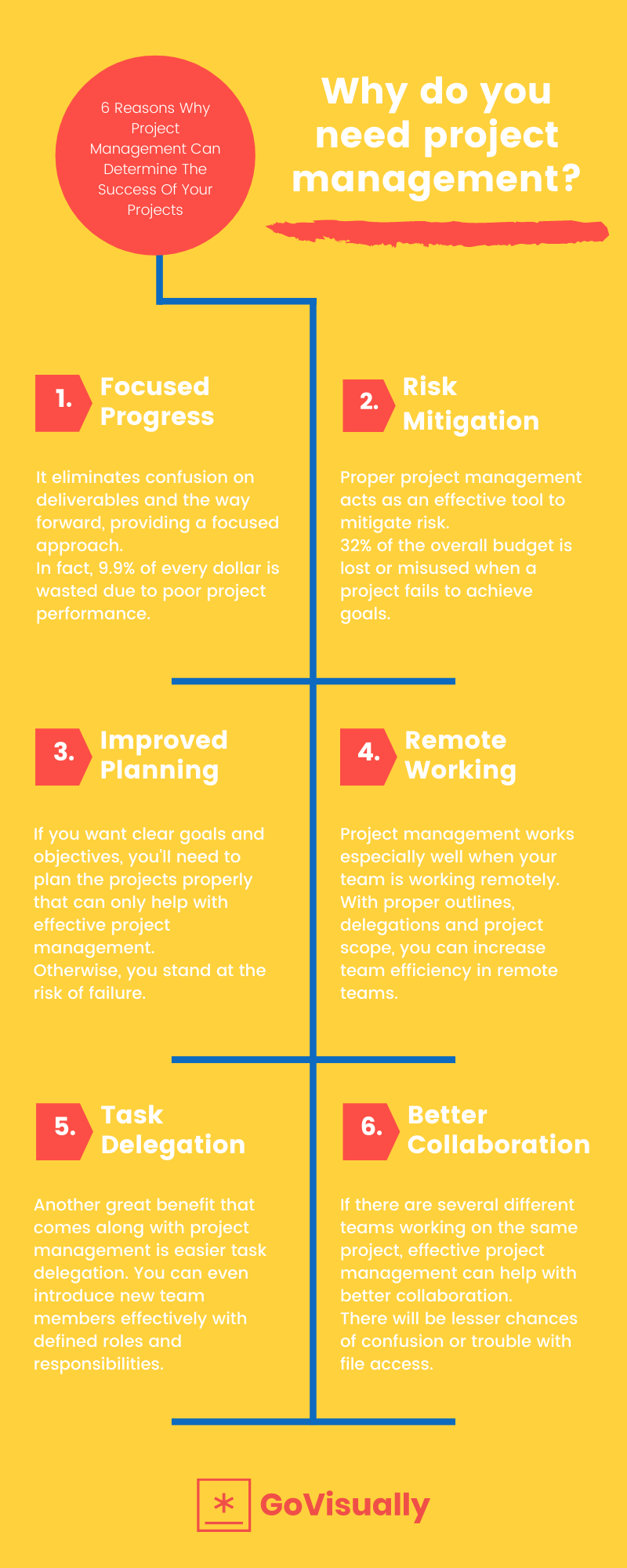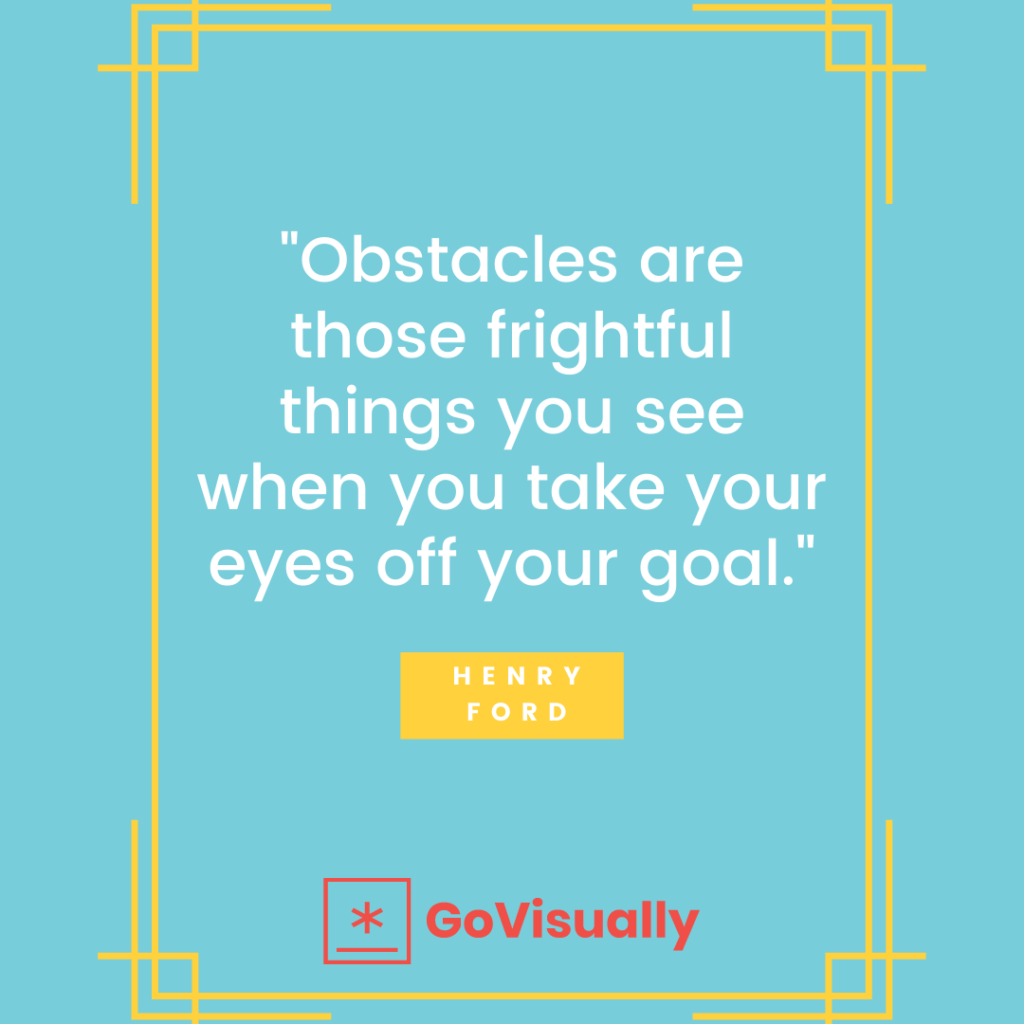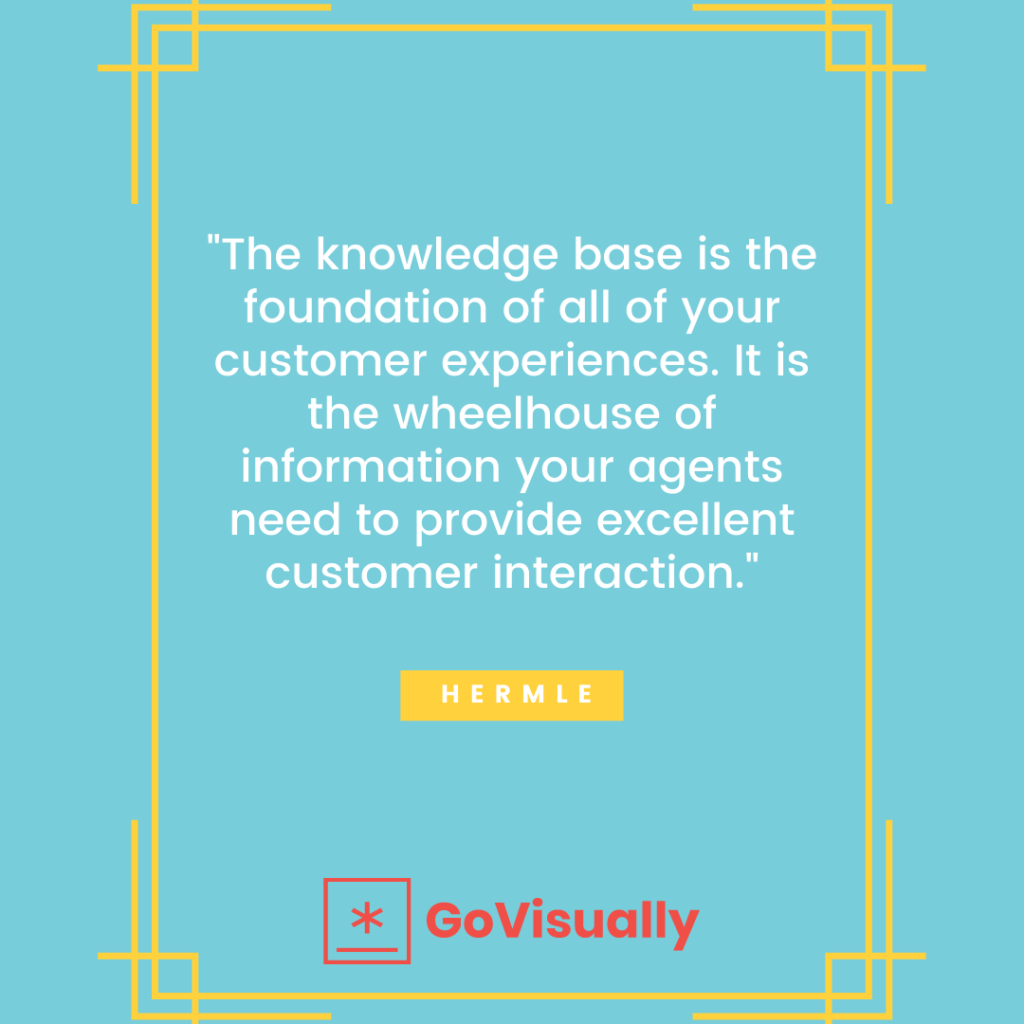Project management doesn’t always come easy, especially when you have tons of projects to manage simultaneously! Often, we think that we’re adopting the best practices for project management, but that fails to reflect in the results.
That’s because, with the increase in the number of projects, it gets hard for project managers to manage the work and keep the team running smoothly. Other reasons that can lead to difficulty in project management include a sudden change in work culture.
Still, it’s just as helpful and necessary as the project itself.

So to give you a headstart, we’ve created this guide of the 18 best practices for project management. Almost all of these are endorsed by high-performing businesses, so gear up for some crazy insights on how to best manage your projects!
Table of Contents
1. Clearly Set Your Goals
When you set clear goals for the projects, it provides a clear vision that helps you align tasks till the end. Apart from that, there are several benefits of setting clear goals. These include:
- Aligning your focus
- Defining the smaller milestones
- Delegating responsibilities
- Making everything centralized
- Defining the roadmap which makes the tasks or goals seem more achievable.
How Can I Set Clear Goals?
So now that you’re aware of the key benefits, here are a few ways you can set clear goals in a project:
- Start by defining the objectives of the project.
- Always break the goals into smaller milestones. This will keep your team motivated and help them achieve their goals better.
- Make sure that you set measurable goals.
- You should also assign the goals that match the team member’s skills. For instance, if a goal involves graphic designing, you should probably assign it to a team member who is skilled in graphic designing.
- And lastly, talk about the relevance of these goals with your team members.
Henry Ford, an American Industrialist and founder of the Ford Motor Company, believe in setting goals clearly.

Aligning your focus on your goals and vision is crucial if you wish to be successful. Ford did not just create an automobile company; his vision was ahead of his time. He built a legacy by focusing on his goals and being sure of his motives and revolutionized the automobile industry for good.
2. Manage All The Risks
Risk mitigation includes developing various options and actions to reduce the possible threats to the project goals and objectives.
You can do this by:
- including risk management to the projects,
- analyzing possible risks that can occur,
- tracking them down as soon as possible.
There are risks involved in every project, but the smart thing that can be done is to identify all the risks you can face. Then plan your project by keeping in mind all those risks and their possible solutions.
Benefits of Proactive Risk Management
Proactive risk management can prove to be beneficial for the business in many ways, such as:
- Creating a safe and healthy environment for customers and employees,
- Reducing the chances of instability, especially financially,
- Improving day-to-day tasks with quality control,
- Staying relevant in the market by avoiding potential risks.
3. Identify Your Strengths and Weaknesses
Project management is about the team and the project manager; is the project manager competent enough to manage the project? Can the project manager play according to their strengths and manage the client and their team? Yes, they can if they plan out everything smartly by choosing the right strengths and weaknesses in every project.
As a project manager, you should first identify the strengths and weaknesses and your team. This helps you to play with your strengths and take action to improve your weaknesses.
Here are some ways you can do this:
- Using SWOT analysis ( strength, weakness, opportunities, and threats),
- Making a note of customer reviews,
- Comparing your business with your competitors,
- Consulting stakeholders.
Recognizing strengths and weaknesses can help you plan your project in a better way and result in better execution. Identifying and working on areas the business lacks and expanding on its strengths can help it flourish in many ways.
- Staying focused on your goal,
- Increases chances of growing,
- Developing sustainable goals,
- Improving the work culture and customer care for maximum satisfaction of the stakeholders.
Identifying strengths and weaknesses helps a business stay relevant and creates transparency with stakeholders, trusting the company more. Prominent companies such as Amazon also make use of their strengths and weaknesses and use the SWOT analysis.
In 2017, Amazon acquired whole foods and stepped into an entirely new market.
- Strength: availability of brick and mortar and leverage in supply chain
- Weakness: the margin that remains in the food business
Ever since the acquisition, Amazon has invested in its strengths and, as a result, invested in creating a great customer experience and gaining loyal customers.
4. Choose the Best Communication Channels
Ineffective communication can leave many problems. The best way to improve this problem is to choose the best communication and collaboration software like GoVisually. You can also use project management tools to help you on this front.
Project management software like Trello or communication channels like Slack makes communication with the teams much easier because of the noticeable benefits.
- Sharing of documents and files with teammates.
- Mentioning particular teammates by sending them a push notification.
- Starting a video or voice conference call.
- Setting reminders for yourself or the team.
Similarly, choosing the best reviewing and approval software like GoVisually can speed up your workflow, and the teams can get faster feedback on the work they submit.
These centralized applications make the workflow much smoother and faster than sending the work separately to the team members for approval. Centralized applications enable seamless communication and networking within the organization and with customers. Some other benefits are:
- Instant feedback on projects,
- Ease in working remotely,
- Help keep up with deadlines.
5. Use Apps to Create a Schedule
Creating a schedule through different applications like Trello and Google Calendar help by dividing the projects into multiple tasks and tracking them better. They also integrate very easily with other communication channels like Slack.
They provide several notable benefits. These include:
- Effective task delegation
- Budget management
- Remote working
- Easier file access and sharing
You can also set reminders and use the applications to ensure that you are right on track with your projects. Businesses who wish to customize and optimize their schedules can use softwares like:
- Appointlet
- Setmore
- Genbook
Effective time management help businesses focus on their productivity while their schedules and deadlines are managed by software. Prominent organizations like GitHub and NBC Universal use scheduling applications like Google Calendar to stay on track.
6.Creating a Knowledge Base
Suppose you happen to come across a problem faced by someone else in a project. In that case, you can read the reports on various previous projects and implement solutions that can effectively solve the problem.
Similarly, You can share the steps you took in your report that can help someone else while dealing with the same problem as you. Creating a knowledge base helps in enhanced communication and improved project integration that leads to better decision making, reduced risks, and continuous improvement in the projects.
A knowledge base can be created by:
- Making use of dedicated softwares,
- Collecting existing information,
- Organize content in a user-friendly way,
- Uploading relevant content.
Having a knowledge base can help employees deal with certain problems promptly; it also allows them to find answers to FAQs and other misconceptions about a particular topic unless it’s peculiar.
Benefits of a knowledge base
There are several benefits of having a comprehensive and easy-to-understand knowledge base, such as:
- Being able to manage potential customer problems proactively,
- Reducing the number of phone calls by customers,
- Reducing training time,
- All useful information and frequently asked questions regarding the business remain in one place.

7.Arrange all Your Resources
Organization of resources is the best practice because otherwise, you and your team can end up wasting a lot of time looking for a particular document.
The best practices for project management include:
- Arranging and organizing all your resources so that you can save time.
- Also, ask your team to follow the same practice; if they access or add something, they should take care of the data organization.
For the online organization of your files and other content, use Dropbox or Google Drive that provides a good amount of storage and sharing options. Hence, no one faces any problem while sharing files and folders over the internet.
Arranging and organizing resources can prove extremely helpful for a business, especially because there are many things to keep up with, so it’s essential to keep track of all relevant resources.
Efficient arrangement of resources also helps with:
- Efficiently running the business,
- Tracking company’s progress,
- Improving management skills,
- Reducing stress.
8. Keep Tracking the Progress and Write Reports
The role of a project manager is to monitor the progress of the entire project and all the stages involved in it.
Keep track of all the team members and their work and get progress reports from them, which will help you create your detailed report. This report will include every detail, including the planning, scheduling, and budgeting, so your superiors know how the project went.
Keeping track of the progress of the project and writing reports also helps.
- Identifying the risks
- Cost management
- Regress of certain elements
- Performance of team members
Keeping track of reports manually can be tedious and have greater errors, impacting projects and progress reports. Some ways one can keep track of progress are:
- Use key indicators to track goals,
- Use project management softwares ( Trello, notion, et),
- Review and store customer reviews,
- Analyze financial statements.
9. Celebrate Small Achievements
Completed a small task?
Celebrate it.
It helps improve the morale of the people and encourages them to work even harder than before. You can celebrate small achievements with your team by:
- letters or certificates of appreciation,
- Celebrate key milestones
- Make sure that the work of the team members is highlighted, so they feel acknowledged.
Having a healthy work environment can do wonders for an organization or a business. Celebrating small achievements can give employees a nudge in the right direction to work harder and better.
Celebrating small achievements can be much more than morale boosters; they can:
- Motivate employees to achieve much larger goals,
- Retain employees,
- Create transparency and comfort in the work environment.
10. Make Sure Everyone is Accountable
Best practices for project management include making sure that all the team members are performing their best. Therefore, as the manager, you should make them realize the importance of accountability. It can be done by
- Mentioning the interconnectedness of tasks to the team members
- Getting commitments publicly on various tasks
- Publically following up on tasks
- Confronting poor performance
11. Try Keeping Your Meetings Brief
If you have a long meeting and keep repeating one thing repeatedly, it can lower the team’s morale, and they will probably find ways to avoid it. The best way is to keep your meeting short and to the point. This will help boost the team members to attend the meetings and be clear about their complete agendas.
Try scrum meetings!
Scrum meetings define different types of meetings that include daily stand-ups, sprint planning sessions that increase productivity and take less time. They are known to be effective because:
- They help in the quick delivery of project deliverables.
- It ensures effective use of time and money
- Increased project control
- Reduced risks
- Better and improved collaboration
Some ways meetings can be kept brief and to the point are:
- Thorough Preparation,
- Changing the size of the meeting,
- Appointing a decision-maker.
12. Motivate Everyone
As a project manager, you want the project to be completed as soon as possible, and one way of doing that is to motivate the team. There are various ways that you can follow and motivate the team to get good results at the end of the day.
Send motivating emails and appreciate them when they complete a task on time are just ways to motivate and encourage them to do better.
Other ways to motivate the team members include:
- Catching up with the team members
- Appreciating them on good work
- Be clear and direct
- Being excited about the project
- Keeping a clear line of communication
Motivating can prove to be beneficial for the business in many ways, such as:
- Boosting the morale of employees,
- Reduce staff turnover,
- Improve the reputation of the company.
If the company is known for treating its employees better, it can do wonders for its reputation. Motivating employees also helps boost their motivation for everyday tasks, which helps the company achieve its goals.
13. Count in Every Possible Change
At times, project managers plan the entire project in detail but forget to factor in all the possible changes that might take place during the process. There are so many changes that can actually take place and affect the project.
These can include changes in deadlines, budgets, dropping out of a team member, or even any unknown risk.
The flexibility in the plan will help to handle all the changes and help to complete the project without having to make a noticeable change, even related to the deadline.
Other possible tasks of counting in every possible change include:
- Assessing and understanding the need and impact of change
- Aligning resources to support the possible changes
- Managing the possible cost of change
Counting and assessing change is crucial for a business. It’s all about adaptability and being proactive if certain changes are made to plans, projects, meetings promptly. Benefits of counting in every possible change include:
- It helps make business and its strategies more adaptable,
- It can prove to be a great learning point for business management,
- Helps identify weakness.
14. Create a High-Performance Team
When you are putting together a team for your project, ensure that you create a high-performance team of expert individuals who are experts in their particular field and know-how to complete the assigned tasks.
Put them in charge of what they are good at, so you get the most productivity from them. Creating a high-performance team helps to have:
- Better communication
- Better efficiency and productivity
- Increased engagement
- Increased trust
Having a High-performance team can surely do wonders for a business. A proactive team isn’t just born; it has to be trained, and some ways a company can make its team High-Performing are:
- Effective Communication,
- Have emotionally intelligent management,
- Use SMART objectives.
15. Transparency is Important
This will help make the team members more responsible, and they will work more efficiently to complete their tasks on time. There’s no specific way to work to create transparency, but some ways it can be done by:
- Having effective communication,
- Sharing results,
- Taking feedback,
- Trusting employees.
Being able to create a certain level of transparency within the business helps foster a safer work environment and has many other benefits, such as:
- Increased employee engagement,
- Better ideas,
- Healthier work environment.
- Transparency also allows customers to trust the business and improves the company’s reputation.
16. Maintain a Clear Purpose
Why is a team gathered to complete a project in a given time? Some questions arise in everyone’s mind asking them why they should have a purpose in the first place to complete the project?
Having a clear purpose for a project helps to motivate the team as well.
- Share the importance of the project
- them why they are involved in the project,
- And what it will do for others and how it can help them.
Having a purpose helps you stay focused on your ultimate goals and remain on the right track. It helps in:
- Attracting customers,
- Motivating employees.
17. Tracking Deviations
Deviations are situations that can happen in any project. It can include issues with deadlines, budgeting, or any other problem related to the team members.
While dealing with a project, you must keep track of these deviations and track all the processes to identify the deviations beforehand and figure out possible solutions before anyone else.
- Use project management tools to have a record of the project,
- Use previous tracking records,
- Focus on the main goal and mission statement.
Tracking deviations can help avert so many problems for a business and help make it more.
- Adaptable
- Reduce chances of errors in projects.
18. Have a Session At the End of the Project
Every project helps to teach one or multiple valuable lessons. You learn about the mistakes you made and the good decisions that helped you in a significant way—having a session at the end with the entire team helps to know what problems they face and how those problems can be avoided in future projects.
- Ask questions related to the best and worst times in a project,
- about the challenges and the steps taken to overcome them.
- About the lessons learned and how they can help in the future.
Consolidate all these answers in one report to know you won’t make these mistakes again and use the solutions and smart decisions to achieve more.
Such sessions can be helpful in many ways, such as :
- Identifying weaknesses and strengths
- Allocation of resources
After every project, the managers must sit back and note resource allocation, areas the business lacks to improve and improve in the future.
Final Word
I hope that you find these best practices for project management helpful! Also, comment if you di implement any of these. We’d love to hear your success stories.




